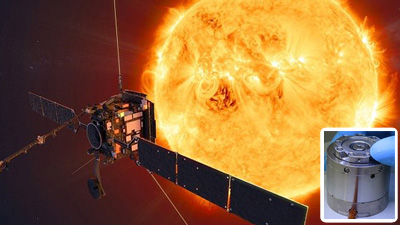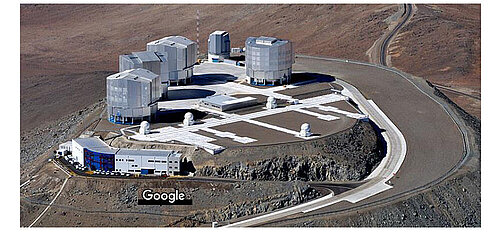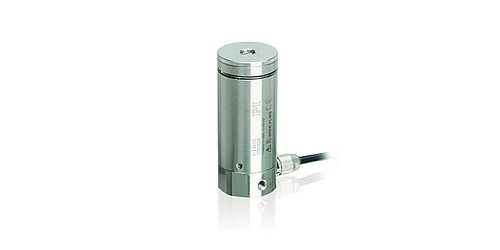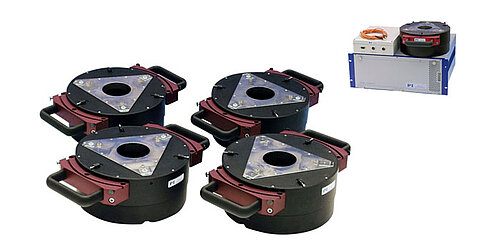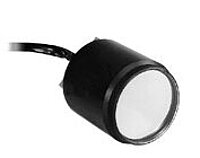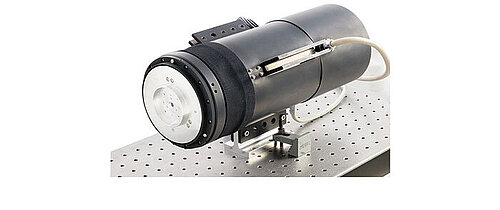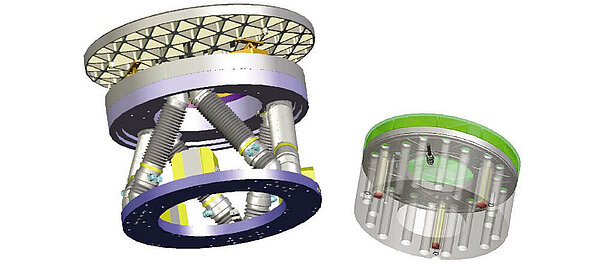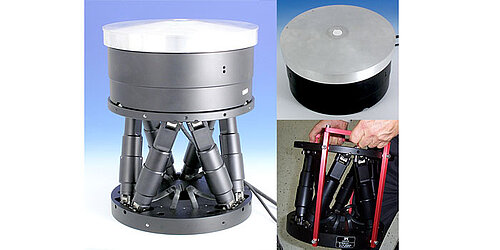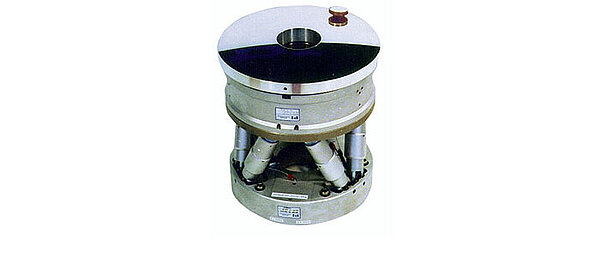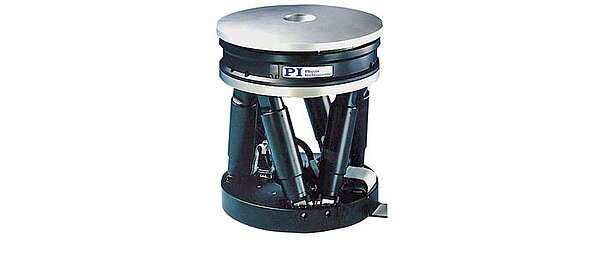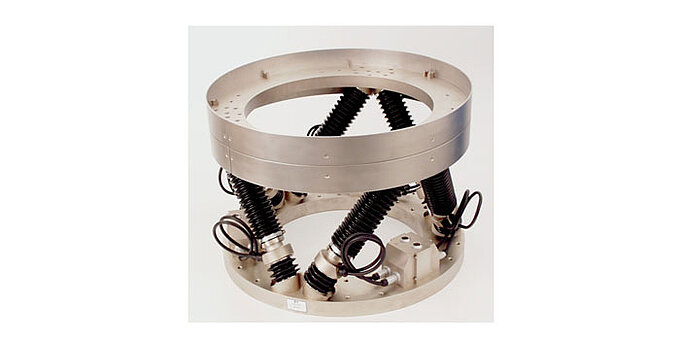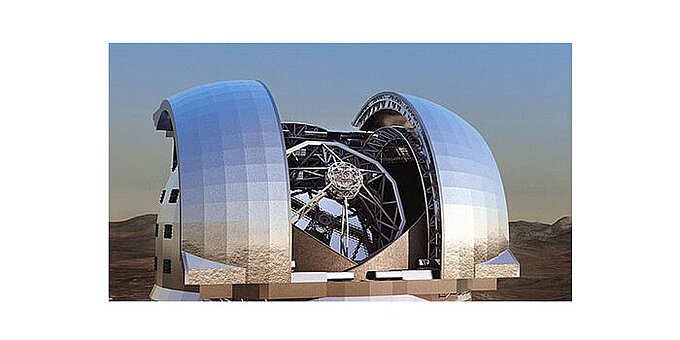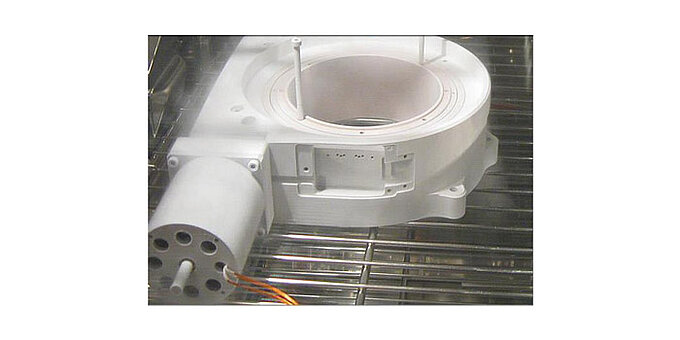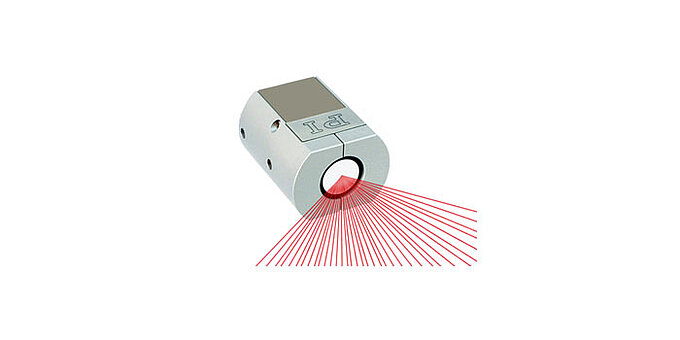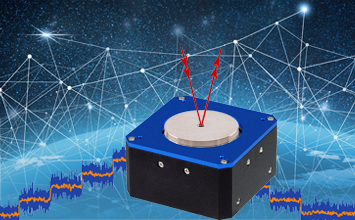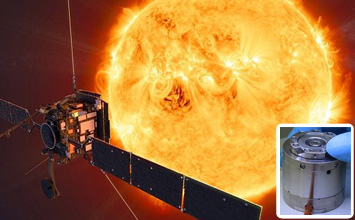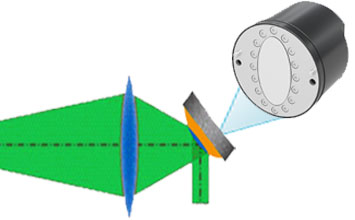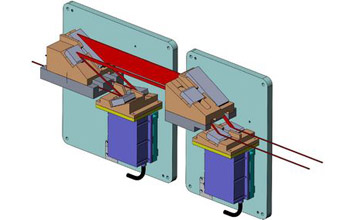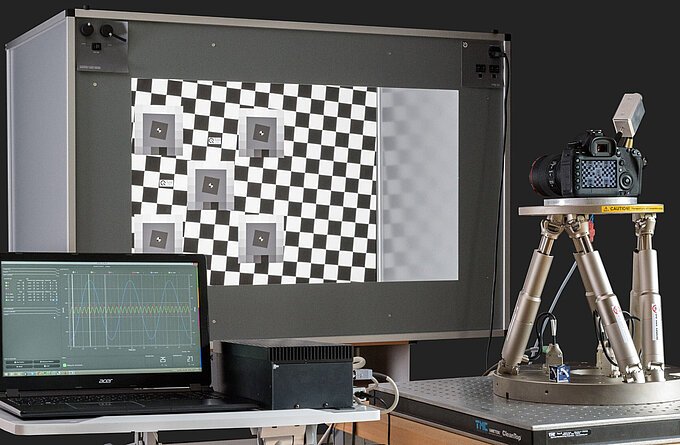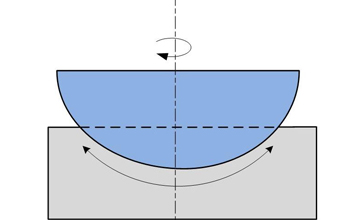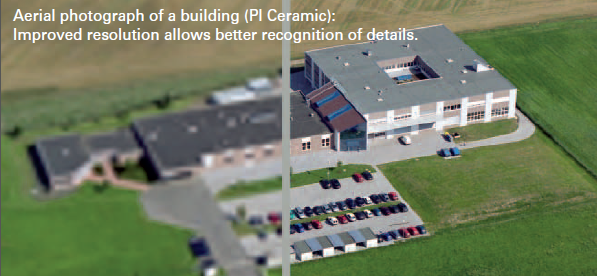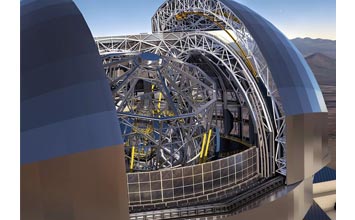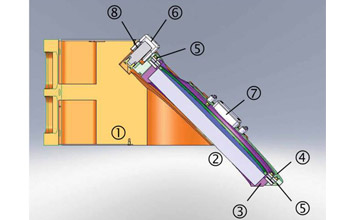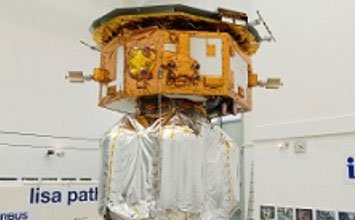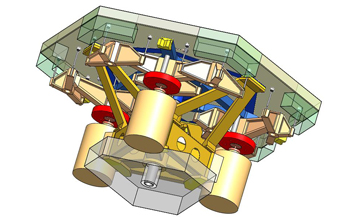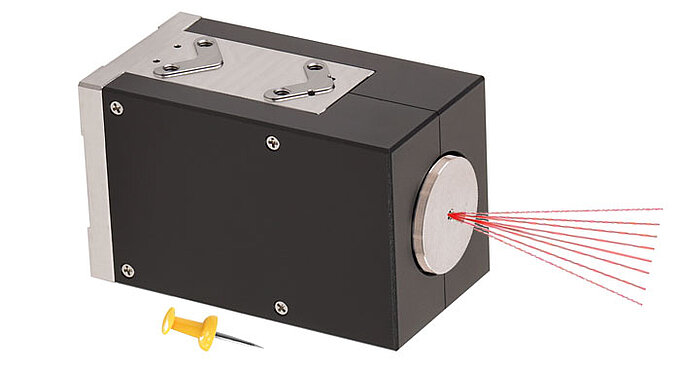Fast Steering Mirrors (FSM) for Image Stabilization and Resolution Enhancement on Astronomical Telescopes
Piezo High Speed Active Optics improve Performance of Optical Telescopes
The Hubble space telescope (and any other space telescope for that matter) does not need active or adaptive optics because, in space, there are no atmospheric turbulences to distort wavefronts. Despite the absence of atmospheric fluctuations, space-qualified steering mirrors can be used on satellite platforms to correct small jitter motions caused by vibrations. Earth-bound astronomical telescopes, on the other hand, are prone to resolution degradation due to wavefront distortion caused by fluctuations in the density of the atmosphere. These fluctuations cause the twinkling of the stars. One way of compensating for these fluctuations is with fast tip/tilt steering mirrors. PI has a long history of working with telescope design teams around the world, providing cutting edge piezo-driven, high-speed tip/tilt platforms. Through a number of challenging projects, our engineers gained a great deal of experience designing large-aperture, high bandwidth tip/tilt platforms. Piezo-driven active mirrors can improve the effective resolution up to 10 times, by correcting blur caused by image jitter in real time which is particularly important during long integrations with weak light sources.
A few Examples of Custom Steering Mirrors for Astronomy Projects are shown below.
Ultra-Stable Mirror Mounts driven by Self-Locking High-Force PiezoWalk Motors
- FSM tip/tilt range around the major axis of the elliptical mirror: ±2
- Angular resolution: <0.5arcsec
- Angular position repeatability: <1arcsec
- Static position stability (elevation 0° to 90°): <20arc seconds
- Minimum resonant frequency: >110Hz
More information here»
The ESO Very Large Telescope (VLT), at the Paranal Observatory, comprises four 8.2-m reflecting Unit Telescopes and several moving 1.8-m Auxiliary Telescopes, the light beams of which can be combined in the VLT.
PI supplies three custom S-340 Piezo Tip/Tilt Steering Mirror Platforms, for beam correction caused by changing telescope orientation.
An S-330 fast steering mirror platform was used for pointing control in the guidance system of the STABLE experiment. This experiment is designed to demonstrate that a high-altitude balloon-based platform is capable of long term sub-arcsecond pointing stability with the help of guide stars and a piezo-driven fast steering mirror for image stabilization.
- 1kHz Resonance frequency with 45mm diameter, 10mm Thickness Zerodur mirror
- Travel range ±0.71mrad
- Full bridge SGS configuration for operation at -45°C at 100,000ft height
- Top platform made from Invar to match Zerodur mirror material
Fast Tip/Tilt Steering Mirrors Combined with Stewart-Platform 6-Axis Alignment Systems for Collimation / Focus
For collimation and focusing, steering mirrors can be combined with Stewart platforms, providing 6 degrees of freedom, along with a large central aperture. PI has accumulating experience designing these combinations since the early 90’s. A few select systems are featured below.
- M2 is an integrated hexapod/fast tip tilt positioning system for light weighted SiC 60 cm dia. aperture off axis secondary
- All specs exceeded with dual hexapod design (piezo-actuated hexapod fast tip/tilt (very high stiffness)) and conventional, sub-micron resolution class micropositioning hexapod for secondary collimation
M-900K Hexapod and S-900K Fast Tip/Tilt Steering Mirror for M2
- Fast Tip/Tilt with internal momentum compensation
- Tip/tilt : ±50µrad
- Resolution: 0.07µradpp
- First resonance: 750Hz
- Bandwidth (-3dB): 250Hz
- Settling time (5µrad +/-5%): 4msec
- Hexapod: focus adjustment and active collimation
- Individual travel ranges
- Linear (x/y/z): ±2/±2/±12mm
- Rotational: ± 2°/ ± 2°/± 1°
- Resolution (x,y,z): 1µm
- Resonance frequencies:
- Fx, Fy: 150Hz, 85Hz @ 12kg
- Fz: > 400Hz, > 200Hz @ 12kg
- Individual travel ranges
PI supplies S-915K Custom System with Fast Steering Secondary Mirror and Hexapod
- Fast tip/tilt travel: ± 250 µrad
- FTT resolution: 0.05 µrad
- FTT sensor: capacitive
- FTT first resonance: 490Hz
- FFT bandwidth (-3dB): 320Hz
- FFT phase shift @ 100Hz: 40°
- Integrated momentum compensation
- Interface plate & posts: Invar
- Hexapod travel (x/y/z): ±5/ ±5/ ±12mm
